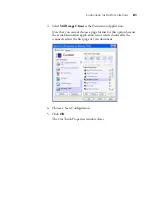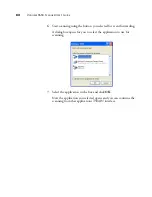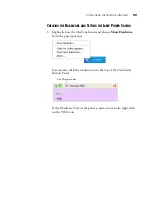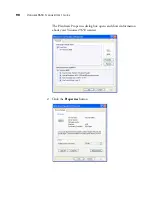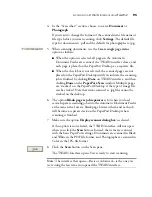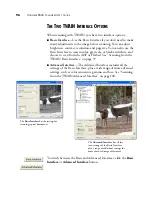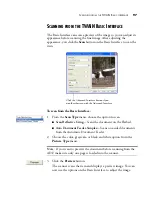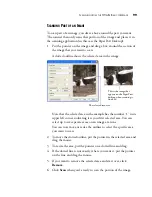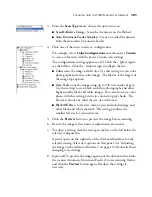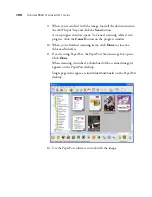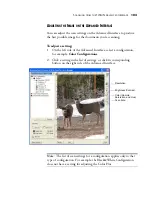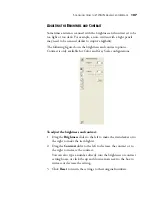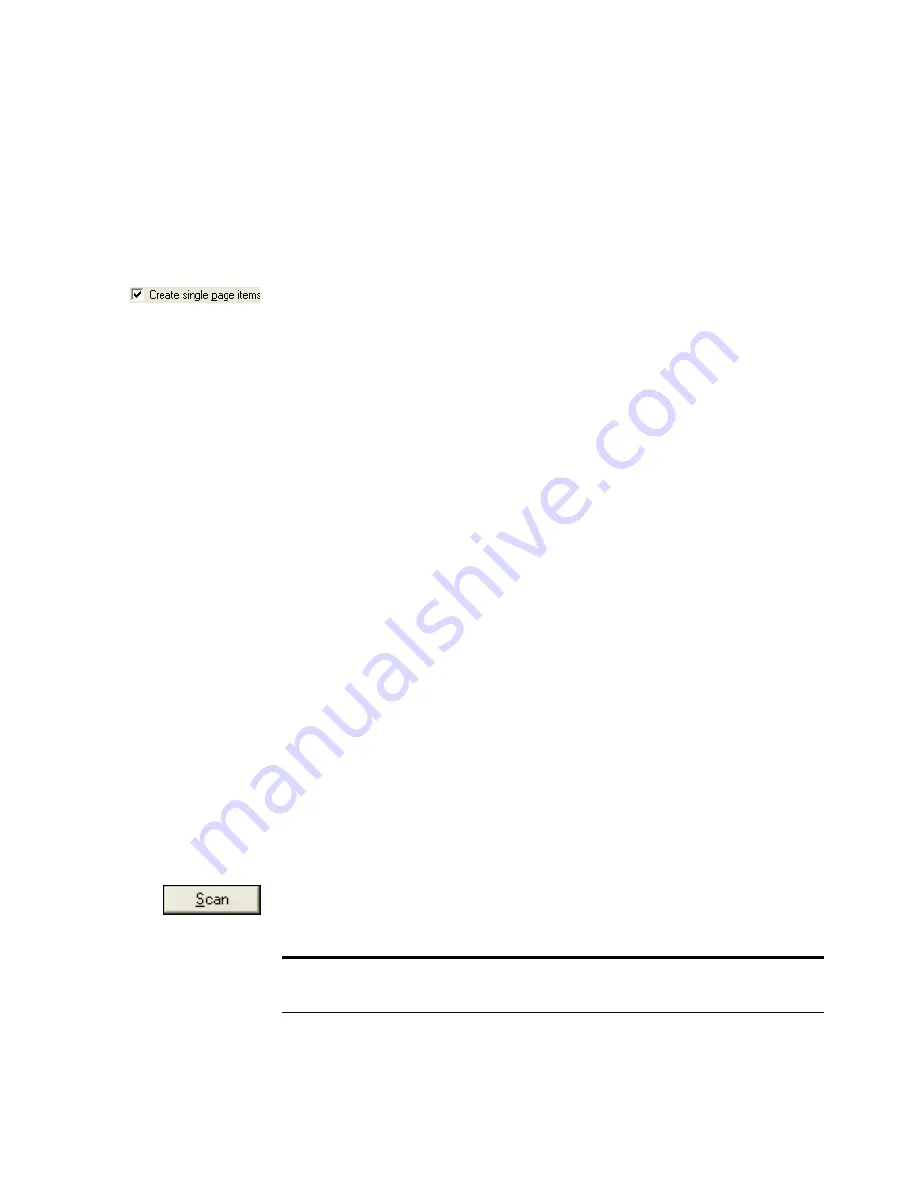
A
CCESSING
THE
TWAIN I
NTERFACE
FROM
P
APER
P
ORT
95
4. In the “Scan what?” section, choose to scan a
Document
or
Photograph
.
If you want to change the format of the scanned item’s file name or
file type before you start scanning, click
Settings.
The default file
type for documents is .pdf and the default for photographs is .jpg.
5. When scanning documents, use the
Create single page items
option as follows:
■
When the option is selected, all pages in the Automatic
Document Feeder are scanned, the TWAIN interface closes, and
each page is placed on the PaperPort Desktop as a separate file.
■
When the check box is not selected, the scanned pages are not
placed on the PaperPort Desktop until you indicate the scanning
job is finished by clicking
Done
on TWAIN interface, and then
clicking
Done
on the
PaperPort-Scan
window. Multiple pages
are “stacked” on the PaperPort Desktop if the type of image file
can be stacked. Note that items scanned as .jpg files cannot be
stacked on the desktop.
6. The option
Blank page is job separator
is for when you load
several separate scanning jobs into the Automatic Document Feeder
at the same time. Insert a blank page between them and each job
will become a separate stack on the PaperPort Desktop when
scanning is finished.
7. Make sure the option
Display scanner dialog box
is selected.
If this option is not selected, the TWAIN interface will not open
when you click the
Scan
button. Instead, the items are scanned
with the basic PaperPort settings. Documents are scanned in Black
and White in the PDF file format, and Photographs are scanned in
Color in the JPG file format.
8. Click the
Scan
button on the Scan pane.
The TWAIN Interface opens. You’re ready to start scanning.
Note:
The interface that opens—Basic or Advanced—is the one you
were using the last time you opened the TWAIN interface.

